Cozy Up: 1930s Living Room Ideas for the Modern Home
Cozy Up: 1930s Living Room Ideas for the Modern Home
The roaring twenties might be all the rage in pop culture, but the 1930s offered a unique blend of elegance and practicality that continues to resonate today. This era, often called the Art Deco period, saw a shift in design away from the opulence of the previous decade, embracing a more streamlined, geometric aesthetic. Today, we're seeing a resurgence of 1930s interior design, especially in living rooms, as homeowners seek to infuse their spaces with a touch of vintage charm and understated sophistication.
This article delves into the hallmarks of 1930s living room design, providing inspiration and practical tips for incorporating this timeless style into your own home. From furniture choices to color palettes and décor, we'll explore the essential elements that will help you create a cozy, inviting, and stylish living room that captures the essence of this iconic era.
The Foundation: Furniture with Character
The 1930s saw a departure from the bulky Victorian furniture that dominated previous eras. Furniture became sleeker, often featuring geometric shapes, curved edges, and streamlined silhouettes. The emphasis was on functionality and comfort, with pieces that were both elegant and practical.
-
Sofas: Look for sofas with a low profile, rounded arms, and deep seating. Upholstery options might include velvets, damask, or chenille fabrics, often in rich jewel tones like emerald green, ruby red, or sapphire blue. Think mid-century modern, but with a touch of vintage flair.
-
Chairs: Armchairs with high backs and deep cushions were popular choices. Consider a wingback chair or a club chair with tufted upholstery. Suede, leather, or patterned textiles can all add to the Art Deco aesthetic.
-
Coffee Tables: A round or oval coffee table is a perfect fit for a 1930s living room. Choose materials like polished wood, glass, or metal for a sleek and modern look. Consider a low table with a geometric base for a touch of Art Deco flair.
-
Side Tables: End tables and side tables with geometric shapes and contrasting materials can add visual interest. Look for metal and wood combinations, or laminate finishes that capture the era's love of modern materials.
Color Palettes: A Touch of Glamour
1930s color palettes were characterized by a richness and depth, often employing bold jewel tones alongside neutral backgrounds. This created a sense of sophistication and glamour, without being overly flashy.
-
Neutral Base: Start with a neutral backdrop using cream, beige, or gray. These colors provide a calm and sophisticated foundation for your bolder color choices.
-
Jewel Tones: Introduce accent colors like emerald green, ruby red, sapphire blue, or amethyst purple. These rich hues add depth and vibrancy to the space, mirroring the glamour of the era.
-
Metallic Accents: Gold, silver, or brass accents were frequently used in 1930s interiors. These metallic touches add a sense of luxury and sophistication and complement the jewel tones beautifully.
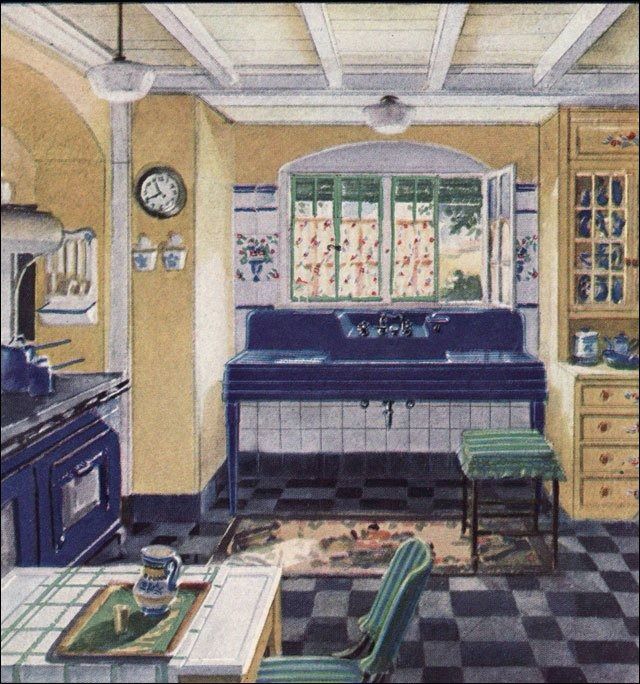
Décor: Reflecting the Era's Style
The right décor can truly bring a 1930s living room to life. Focus on elements that capture the era's love of geometric patterns, luxurious materials, and functional design.
- Geometric Patterns: Geometric patterns like art deco motifs, chevrons, zigzags, and sunburst designs were popular in 1930s textiles and wallpaper. Incorporate these patterns through throw pillows, curtains, or even a statement rug.
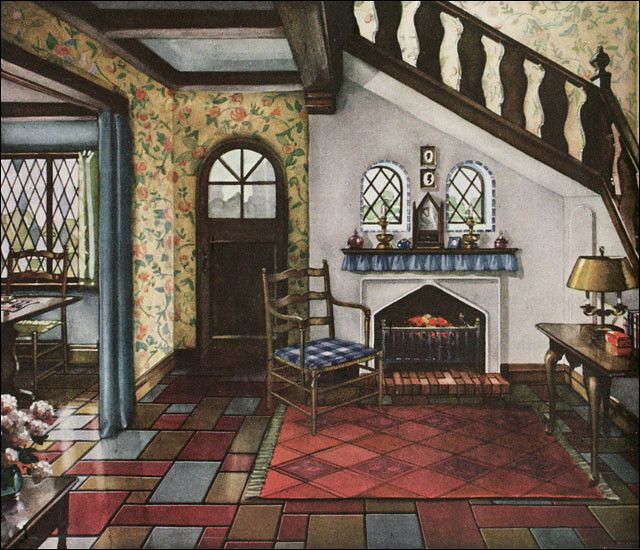
-
Luxurious Textiles: Velvet, silk, satin, and damask were favored for their texture and luxurious feel. Use these fabrics for throw pillows, draperies, or even upholstery.
-
Metallic Accents: Gold, silver, or brass accents add a sense of glamour and sophistication. Consider using metallic lamps, sculptures, or even picture frames to introduce these touches.
-
Art Deco Artwork: Art Deco art is a perfect way to add authenticity and character to your 1930s living room. Look for pieces that feature geometric shapes, strong lines, and bold colors.

- Vintage Finds: Antique or vintage furniture can be a great way to incorporate authentic 1930s style. Visit antique shops, flea markets, or online vintage stores to find unique pieces that will add character to your room.
Lighting: Illuminating the Glamour
Lighting plays a crucial role in creating the desired ambiance in a 1930s living room. Think soft, diffused light with a focus on functional and decorative lighting elements.
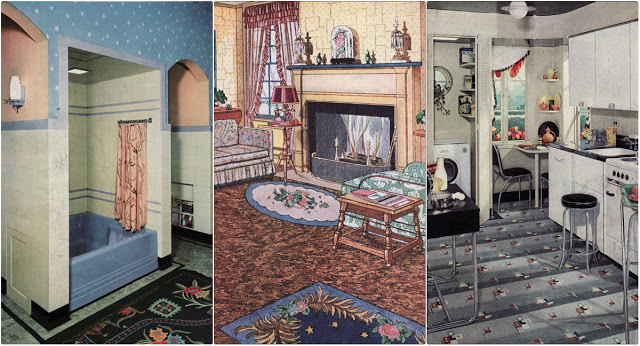
-
Chandeliers: A chandelier with geometric shapes or crystal accents is a classic Art Deco lighting choice. Choose a chandelier that complements the overall style of your room.
-
Table Lamps: Table lamps with geometric bases and luxurious shades can add both style and function to your living room. Look for materials like metal, glass, or wood to capture the Art Deco aesthetic.
-
Floor Lamps: Floor lamps with tall, slender bases and decorative shades are perfect for adding height and elegance to the room. Choose a lamp that complements the other furniture and décor in your space.

- Wall Sconces: Wall sconces with geometric or stylized designs can add a touch of glamour and sophistication to the room. Place them flanking a fireplace, a mirror, or a piece of artwork for a dramatic effect.
Creating a Cozy and Inviting Space
While 1930s interiors are known for their elegance, it's essential to remember that comfort and coziness are also important aspects of a living room. Here are some tips for creating a welcoming and inviting space that embraces the 1930s aesthetic:

-
Soft Textures: Incorporate soft textures through rugs, throws, pillows, and upholstery. Consider plush velvet, chunky knit blankets, or soft chenille fabrics for a cozy and inviting feel.
-
Layered Rugs: A layered rug can add warmth and texture to your living room. Use a large area rug as the foundation and then add a smaller rug in a contrasting pattern or color.
-
Personal Touches: Don't forget to add personal touches to make your living room feel truly yours. Use family photos, travel souvenirs, or antique books to add personality and warmth.

- Plants: Plants can add life and freshness to any living room. Consider using plants in decorative pots or hanging baskets to complement the Art Deco aesthetic.
Tips for Incorporating 1930s Style into Your Living Room
- Focus on a cohesive color palette: Choose a neutral base with accent colors that complement the era's glamour. Think emerald green, ruby red, sapphire blue, and gold or silver accents.
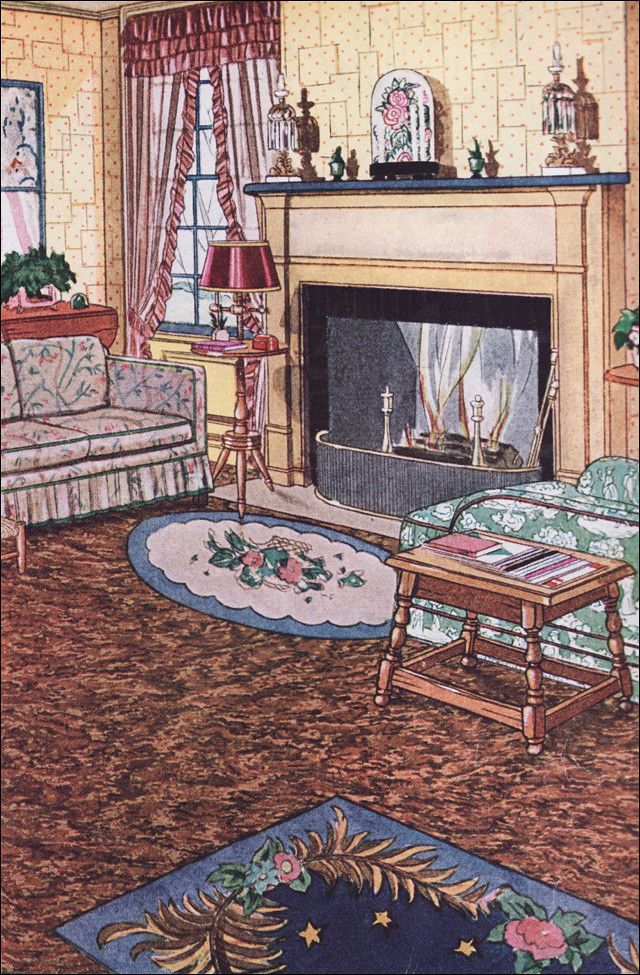
-
Embrace geometric shapes and patterns: Look for furniture with geometric silhouettes, like round coffee tables, square end tables, or sofas with curved arms. Incorporate geometric patterns in your rugs, pillows, and curtains.
-
Use luxurious fabrics: Embrace the richness of velvet, silk, satin, and damask for upholstery, drapes, and throw pillows.
-
Layer textures and patterns: Create visual interest by layering different textures and patterns. For example, combine velvet upholstery with a geometric patterned rug or a patterned throw with a solid-color sofa.
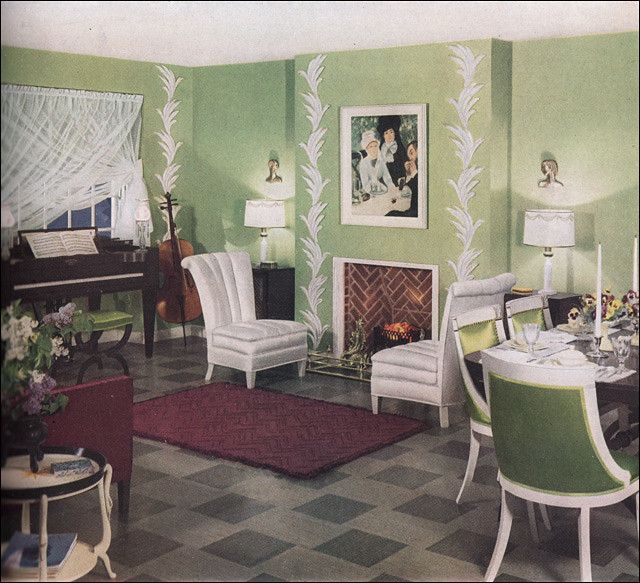
- Don't forget lighting: Choose lighting fixtures that complement the Art Deco aesthetic, such as chandeliers with geometric designs or table lamps with luxurious shades.
Conclusion: Embracing the Timeless Glamour
Creating a 1930s living room for the modern home is about finding a balance between the timeless elegance of the era and contemporary functionality. By embracing sleek furniture, rich color palettes, geometric patterns, and luxurious materials, you can create a space that is both stylish and comfortable.

Remember, the beauty of 1930s design lies in its attention to detail and its ability to combine practicality with sophistication. With careful planning and a touch of creativity, you can transform your living room into a cozy and inviting sanctuary that reflects the timeless glamour of this iconic era.
Cozy Up: 1930s Living Rooms That Steal Your Heart
The 1930s was a time of great change and innovation, and this was reflected in the design of homes. While the Art Deco movement dominated the architectural landscape, living rooms began to take on a more cozy and inviting feel. This shift in design philosophy was driven by a desire for comfort and intimacy in the face of economic hardship and social upheaval.

The Essence of 1930s Living Rooms:
The 1930s living room was a haven of warmth and comfort, a place where families could gather and relax after a long day. This focus on coziness was achieved through the careful selection of furniture, fabrics, and color palettes.
Key Features of a 1930s Living Room:

1. Furniture:
- Curved Sofas: The era saw a move away from stiff, angular furniture towards softer, more inviting pieces. Curved sofas, often with deep, inviting cushions, became a hallmark of the 1930s living room.
- Club Chairs: Club chairs, with their deep seats and high backs, were another popular choice, offering a perfect spot to curl up with a good book.
- Armchairs: These were often paired with ottomans, creating a cozy and inviting seating area.
- Coffee Tables: Coffee tables, usually low to the ground, provided a central gathering space for family and friends.
2. Fabrics:

- Velvet: The luxurious feel of velvet brought an air of sophistication to 1930s living rooms.
- Brocade: This rich, patterned fabric was often used for drapes and upholstery, adding an elegant touch.
- Chintz: This printed fabric, often featuring floral patterns, added a touch of whimsy and color to the space.
3. Color Palettes:
- Muted Tones: 1930s living rooms favored a muted color palette, with soft shades of cream, beige, and gray creating a calming and relaxing atmosphere.
- Bold Accents: While the overall palette was muted, pops of bold color were often used to add interest and personality. These could be in the form of throw pillows, artwork, or even the color of the rug.

4. Lighting:
- Warm Glow: The era favored softer, warmer lighting, which created a welcoming atmosphere.
- Floor Lamps: Floor lamps with soft, diffused light were commonly used to illuminate seating areas.
- Table Lamps: These provided focused light for reading or other tasks.
- Chandeliers: While less common than in previous decades, chandeliers could still be found, adding an element of elegance to the space.
5. Decor:

- Fireplaces: Fireplaces were a central focal point in 1930s living rooms, offering warmth and a sense of coziness.
- Bookshelves: Built-in bookshelves were a popular feature, showcasing personal collections and adding an element of sophistication.
- Plants: Bringing the outdoors in was a key part of 1930s design, with plants adding a touch of freshness and vibrancy to the space.
- Artworks: Artwork, often featuring abstract designs or landscapes, provided visual interest and personality.
Recreating the 1930s Living Room:
The 1930s living room was a testament to the power of design to create a truly inviting and welcoming space. If you're looking to recreate this look in your own home, there are a few key elements to keep in mind:

- Choose furniture with curved lines and deep, comfortable cushions.
- Incorporate luxurious fabrics like velvet and brocade into your decor.
- Opt for a muted color palette with pops of bold color.
- Use warm lighting to create a welcoming atmosphere.
- Add personality with artwork, plants, and other decorative elements.
Creating a Modern Take:
While you can recreate the look of a 1930s living room, it's also possible to create a more modern take on the style. This can be achieved by incorporating elements of contemporary design, such as:

- Sleek lines: While curves are characteristic of the era, adding a few pieces with sleek lines can create a more modern feel.
- Neutral colors: Using a neutral color palette can create a more contemporary look, while still retaining the cozy feel of the 1930s.
- Modern accents: Adding a few modern accents, such as a geometric throw pillow or a piece of abstract art, can update the look without sacrificing the overall aesthetic.
The Enduring Appeal of 1930s Living Rooms:
The enduring appeal of 1930s living rooms lies in their ability to create a sense of comfort, intimacy, and warmth. They are a testament to the importance of design in creating spaces that nourish our souls and provide us with a sense of belonging. Whether you choose to recreate the look of a traditional 1930s living room or create a modern take on the style, you're sure to create a space that is both stylish and inviting.

Here are some additional tips for creating a cozy 1930s living room:
- Layering: Layering textures and patterns can add depth and interest to the space.
- Symmetry: Maintaining symmetry in your furniture arrangement can create a sense of order and balance.
- Personal touches: Add personal touches, such as family photos, travel souvenirs, or books, to make the space feel truly your own.
- Don't be afraid to experiment: There is no one right way to create a 1930s living room. Experiment with different elements and find what works best for you.
Conclusion:


The 1930s living room is more than just a design trend; it's a reminder of the power of design to create a sense of comfort, intimacy, and warmth. By incorporating the key elements of this style, you can create a space that is both stylish and inviting, a place where you can truly relax and unwind. So, go ahead and cozy up in your own 1930s-inspired living room, a space that will steal your heart and offer a sanctuary from the hustle and bustle of modern life. .
